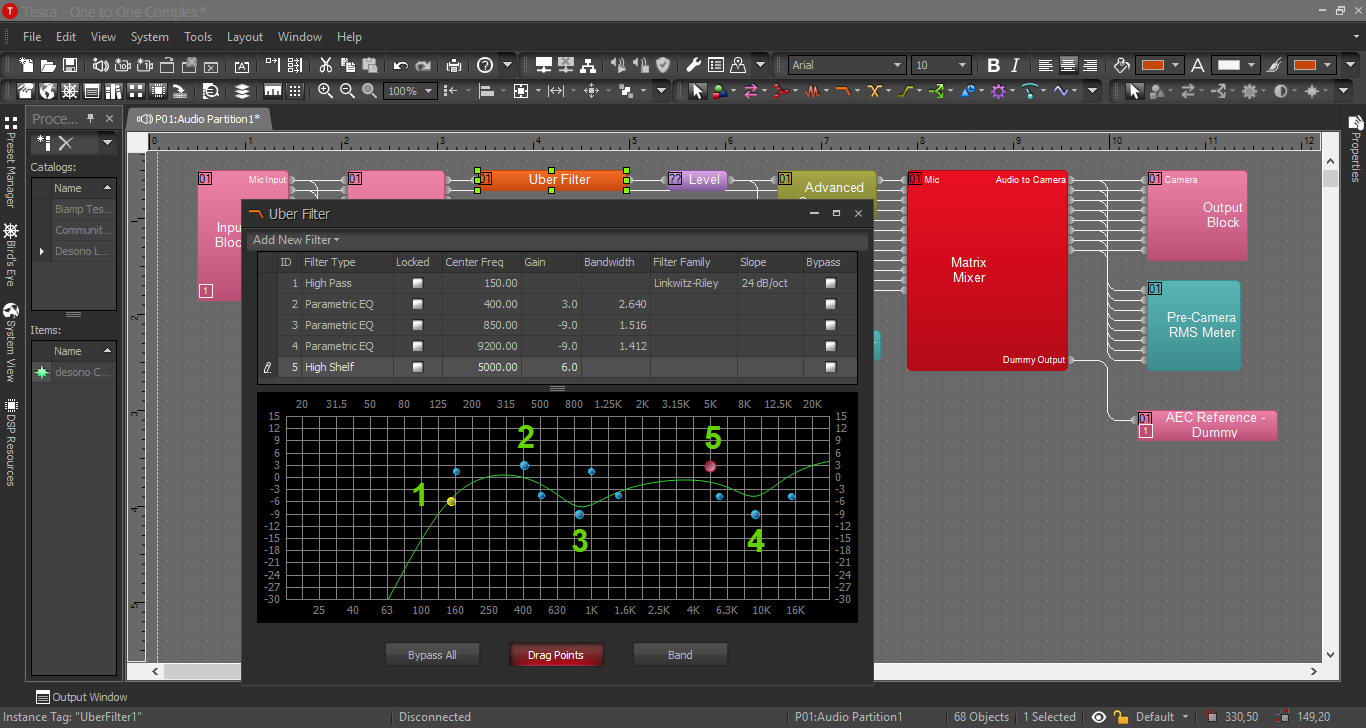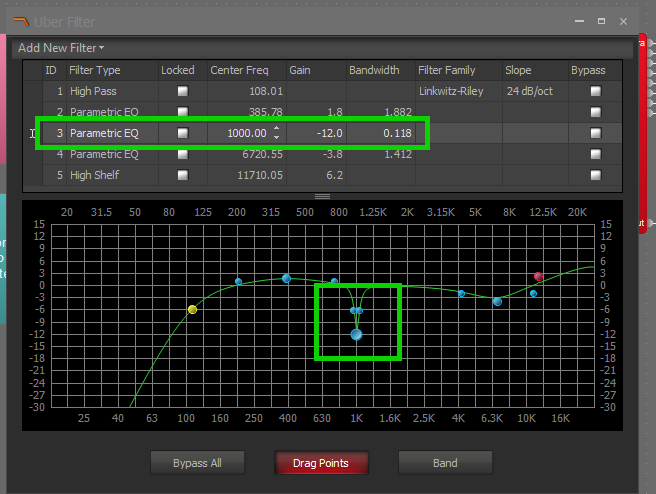EQ Processing
Revision as of 08:40, 27 April 2020 by IVSWikiBlue (talk | contribs) (Created page with "===EQ/Uber Filter=== Below are some basic recommendations on EQ settings. Keep in mind, the settings will be environment-dependent, so it is crucial to actively listen to the...")
EQ/Uber Filter
Below are some basic recommendations on EQ settings. Keep in mind, the settings will be environment-dependent, so it is crucial to actively listen to the audio on an install, but these settings are a good place to start. Use the "Bypass" buttons to hear an A/B comparison of your changes to the unaltered audio.
- High pass: This will allow any frequencies higher than what we have chosen, to “pass”. Meaning, frequencies lower than that will be removed, exponentially. This will help clean out low rumble of HVAC, vending machines, fridges; if there happens to be one in an adjacent break room. Removing frequencies below 150-200 Hz is usually appropriate.
- Low boost: This is by no means crucial, but it will help provide some fullness to the dialogue. Since the microphone is as far away as 10 feet from the people in the room, the fullness and richness can be lost a bit. At the office at IVS, about 400-450 was a good place to boost.
- Mids dip: This is a place where the audio can sound “boxy” or thin. Again, this is not crucial, but it may help to drop these frequencies a bit for more accurate sound. At the office, this EQ was set at about 850-900 Hz.
- High frequency white noise dip: If the Noise Reduction settings on the AEC Block haven’t solved everything, there may still be white noise in the room. It may be the case if the walls are particularly close, or flat and empty. At the office, 9000-9500 Hz was where the white noise lives.
- High shelf: A high shelf will boost or lower all the frequencies above a certain point (differs from a low or high pass filter; a pass filter will remove those frequencies exponentially.) By boosting high frequencies, this will provide clarity to the dialogue, to keep it from sounding dull or muffled. At the office, above 5000 was boosted.
- Notice that the curvature of these boosts and cuts is fairly broad; many frequencies are impacted by our settings. This is almost always the goal. In infrequent cases, there is a sound at a very specific frequency. This will almost always be caused by a device; a beeping or a whining at a certain frequency that may be distracting. To cut a noise like this, pull the curve together with the handles of each EQ to create a more “surgical” cut. Then simply sweep the EQ across the spectrum until you find that frequency.
Below is an example of a "surgical" EQ cut, at 1000 Hz:

